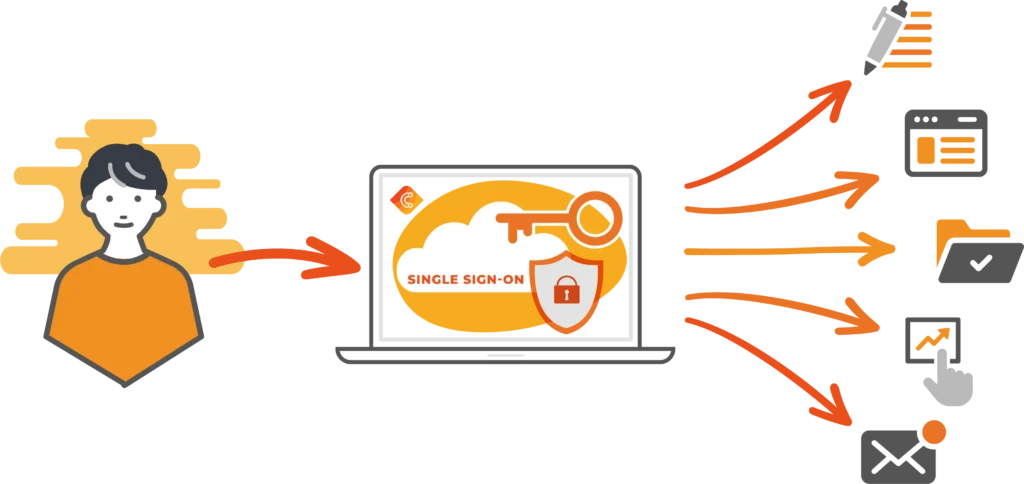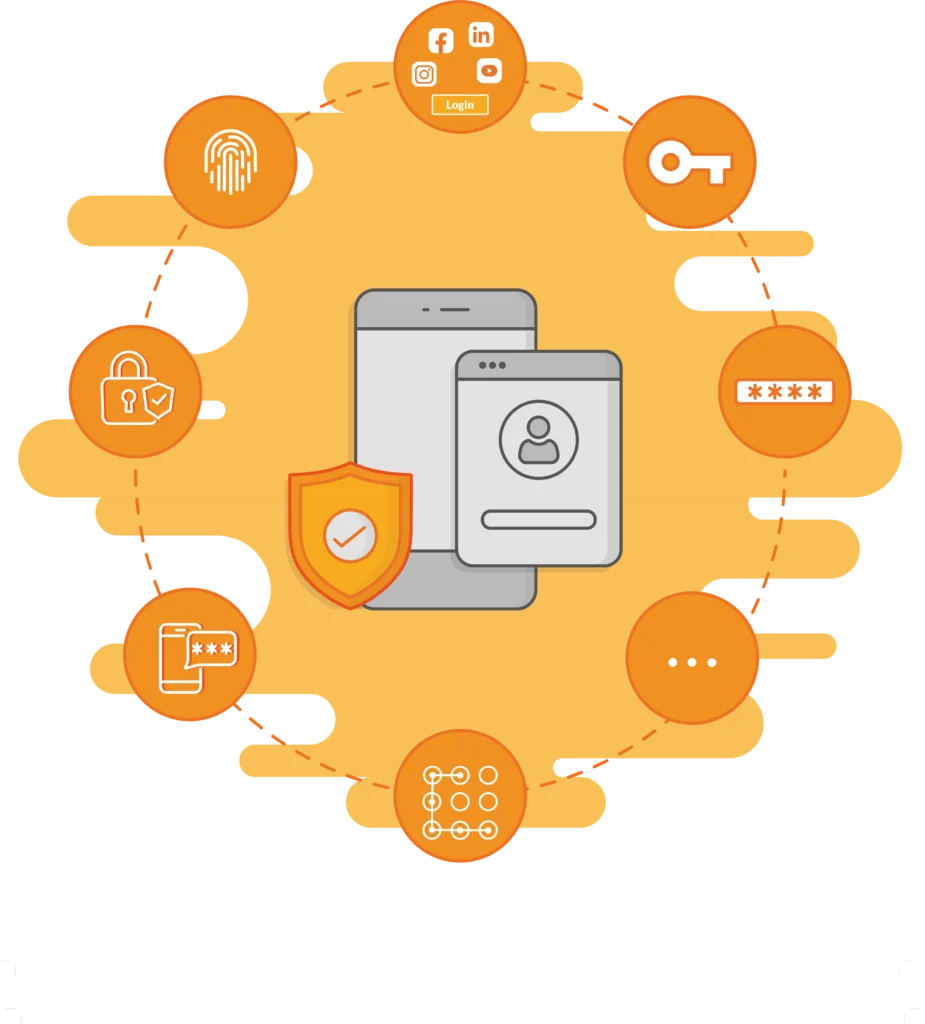Single Sign-On with cidaas
Just one single login and fast access to all platforms thanks to Single Sign-On! No more countless passwords – with cidaas Single Sign-On, everything is just one login away.

What is Single Sign-On (SSO)?
“Login once” and “stay logged in” – that’s what Single Sign-On is all about. By logging in using SSO, users can access and conveniently use all their digital services and applications with just one login. The user only has one unique digital identity across all channels instead of different accounts with different login details. This allows you to provide a single login for all your applications, the user has to remember fewer login details and you know where the user is. This ensures that switching between applications is seamless and remains so until single sign-off.

Advantages & benefits of Single Sign-On
No more remembering countless passwords – create a digital identity for your users across all your channels. Whether in the B2C, B2B or B2E environment – with just one login, you give your users easy and convenient access to all relevant applications, thereby increasing user-friendliness and the user experience. Single Sign-On is a helpful feature across all industries to increase convenience and minimize the time required.

Simplicity & comfort
The user receives a uniform login across all channels and does not have to remember different login details as before. A single login process grants access to all systems. Different data may be required for each system. With the help of a digital identity, user data is merged into a central profile, authorizations are managed centrally and transparency is created for users and companies alike.
Time savings & less administrative work
Single Sign-On reduces logins and the number of login details. This eliminates time-consuming logins, various password updates and often lengthy “forgotten password” processes. User access can be managed centrally and it is ensured that every user can access the required applications.


Security
With cidaas, the user can choose from a wide range of different authentication methods, thus moving away from passwords that are considered insecure by the BSI. If a password is chosen as the authentication method after all, Single Sign-On significantly reduces the frequency of entry and thus the points of attack for phishing attacks, for example. In addition, a user can remember a single “strong” password better and is therefore less likely to choose a simple combination of characters.
One-time authentication:
Single Sign-On explained using an example
User friendliness
Register once, access all digital channels and conveniently use all services!
Time saving
Simple and cross-device verification procedure!
A digital identity
With user deduplication, several accounts of one person are linked to a unique digital identity.
High security
High security and protection against phising & other security breaches!
Why Single Sign-On?
If a user needs different applications, which in turn have different accesses, numerous access data are normally required. The user must remember the login data for all the applications they want to access.
With the help of an Identity & Access Management (IAM) system, a created identity can be used across different applications. For each access request, the IAM system checks whether the user is authenticated and authorized to access the resource.
Functionally, it looks like this:
The user calls up the desired digital service. The service exchanges information with the IAM system as to whether a valid session exists; if this is the case, the user is taken to the login page. After a successful login, the IAM system issues the application with a new valid token. The Single Sign-On procedure works smoothly with the help of the standards: Open ID, OAuth2 and SAML.
Our customers who trust in cidaas!

In our blog “Single sign-on in 30 minutes” you can find out how you can set up and implement your SSO in the shortest possible time. Get an overview of how SSO in IAM and CIAM use cases can offer you a decisive advantage for your employees and customers.

Find out why Single Sign-On is so important in today’s world and why it is still often underestimated. Get an overview of the top 3 misconceptions about why you don’t need Single Sign-On.
Frequently Asked Questions

How does Single Sign-On work?
Single Sign-On allows users to log in once and then be automatically logged in to other applications or remain logged in. We have explained how this works in our blog: Single sign-on in 30 minutes explained.
How can a Single Sign-On be terminated?
The user remains permanently logged in unless a time limit is activated and automatically logs the user out after a certain period of inactivity.
How secure is Single Sign-On?
With the help of an Identity & Access Management tool and the use of modern standards such as OpenID Connect, OAuth2 and SAML, the Single Sign-On feature offers ideal protection for your digital services. It also reduces the potential for phishing attacks, for example.

cidaas - Cloud Identity & Access Management (Cloud IAM)
- Focus on user-friendly management of digital identities in any form
- Unique, secure user experience with modern 2-factor authentication
- GDPR-compliant, customizable consent management













